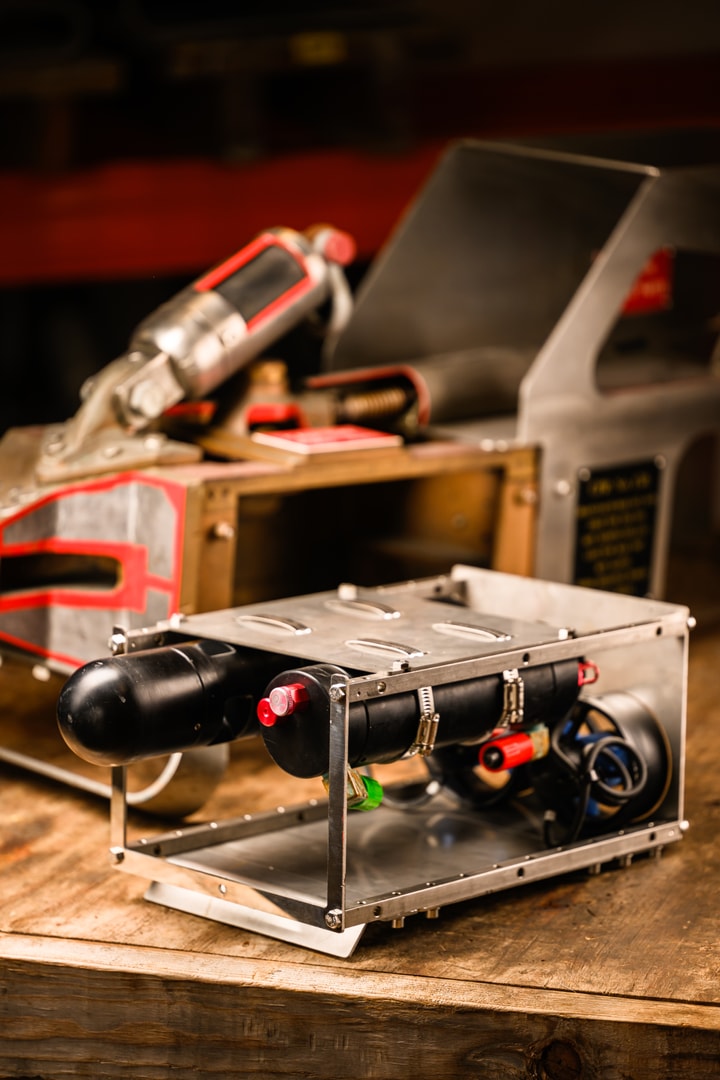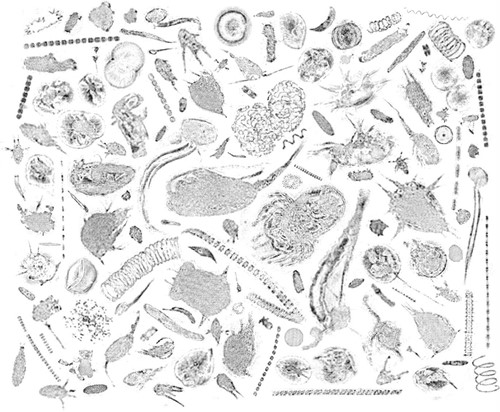The science of tomorrow, today

Advances in technology have enabled the long-awaited transformation of the existing CPR sampler into a modern autonomous platform, revolutionising monitoring capabilities while retaining consistency with the historical data gathered over almost 7 decades.
In 2020, the iCPR project was born with a simple mission: ‘use modern sensing technology and introduce Artificial Intelligence (AI) across our existing global plankton observation network’. And, of course, this new platform had to remain simple, robust, and cheap.
The iCPR sampler is equipped with a suite of sensors able to capture the physical performance of the sampler, key environmental variables, and precise digital images of plankton using a bespoke holographic camera.
Fitting neatly inside a traditional CPR sampler, the iCPR module transforms it into a self-powered platform able to sample anywhere a commercial ship is operating, with - except for deployment and retrieval - no intervention from the crew. Using the flow of water through the sampler body, two impellers generate electricity: an iCPR sampler needs no batteries and can record data over long periods of time.
The iCPR sampler monitors the environmental parameters that most strongly influence plankton. Temperature is a primary driver of the physiology of any plant or animal. It also gives us critical information on the structure of the water mass that the sampler is passing through. Salinity indicates oceanographic features such as ocean fronts and gyres. Finally, fluorometers allow us to directly measure the chlorophyll-a present in the environment—an excellent indicator of the productivity of an oceanic water mass.
An exciting development of iCPR instrumentation is its capacity for in situ imaging through a holographic camera, developed at the University of Plymouth, which enables focused, fine resolution images, even at tow speeds exceeding 20 knots. Automated in situ marine imaging is not new, but it has taken decades for the technology to mature to the point where such imaging systems are reliable. Our iCPR holographic camera is capable of generating hundreds of thousands of images in a matter of hours.
 Images obtained from the holocam
Images obtained from the holocam
In-situ images (i.e. holograms) allow biological contents to be visualised directly from bulk volumes without disintegrating cell structures or disrupting the standard operating methodology of the CPR. At this stage, automated measurements of focused particles are made. In-situ digital imaging can provide detailed information on the distribution, abundance, and morphology of plankton species across large areas and scales. It is, therefore, a valuable source of consistent data and information on the status and trends of biodiversity at various scales. Another way to use holographic images is to categorise particles not as species, but on the basis of functional morphology. An AI system to do this is being developed by the CPR.
The science of tomorrow, today
The CPR survey is now routinely trialling the iCPR in the Irish Sea (Liverpool–Dublin). In the second half of 2023, we added Tromsø to Svalbard in the Norwegian Sea. This route is important from a scientific point of view, as it is where the Atlantic and Arctic Ocean meet, and the temperature of the Arctic has already risen at a rate of almost three times the global average. In November 2023, we sent our first iCPR sampler on our longest transatlantic route, linking Iceland to Newfoundland and Labrador, Canada. This route crosses the transition area between the Labrador Sea and the Atlantic Ocean, as well as the sub-polar gyre, and is an area which has already shown impacts of climate change.
Eventually, all our CPR samplers will be replaced with iCPRs. Towing more than a dozen iCPR samplers every month will enable us to grow our image libraries to train our AI models, optimise our measurement protocols, and deepen our understanding of plankton dynamics and marine diversity. But this large-scale deployment of iCPR samplers comes with challenges. Collecting hundreds of thousands of images per month and supporting data requires the development of advanced computing and processing infrastructure able to analyse images, measure and classify particles, and output information for research and policy.
It is a testament to his vision and practicality that Sir Alister Hardy’s original design has survived virtually unchanged for nearly a century. As technology develops, this robust, mechanical data gathering box will continue to be a sophisticated platform for ocean science of the future.
The iCPR team
Dr Pierre Hélaouët is a senior numerical ecologist and data scientist at the Marine Biological Association (MBA). Pierre led the iCPR project and oversees its continuation. He specializes in marine planktonic biodiversity.
Prof Alex Nimmo Smith is Professor of Marine Science & Technology at the University of Plymouth and is part of the Marine Physics Research Group (MPRG). Alex developed the iCPR module.
Robert Camp is the instrumentation and data technician at the MBA. Rob had a central role in building the iCPR module and now supervises its deployment and retrieval as well as its maintenance.
Kairan Cursons is a PhD student (MBA/Plymouth University). The aim of this PhD is to process images of archived and live plankton. The resulting digital image libraries will be used to train AI models to automatically identify and classify plankton images.
This is an abridged version of the article adapted from that appeared in the January 2024 edition of The Marine Biologist, our the magazine of the marine biological community. Our Magazine | The Marine Biologist | Marine Biological Association (mba.ac.uk)

